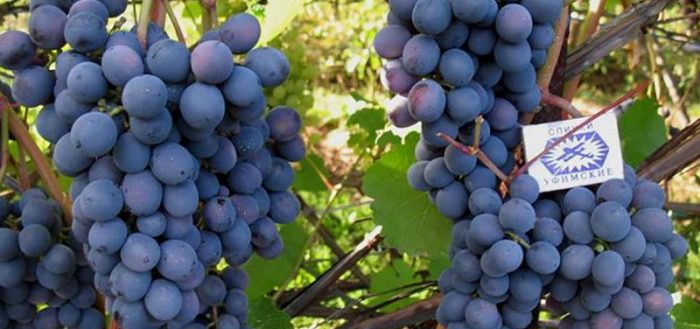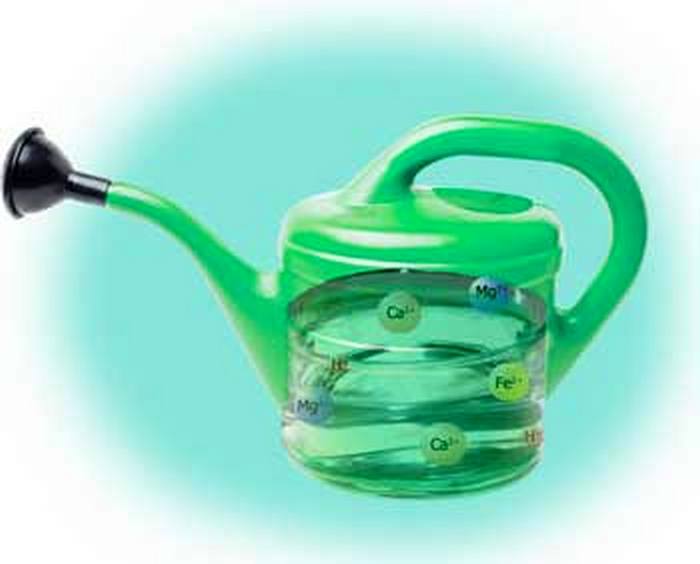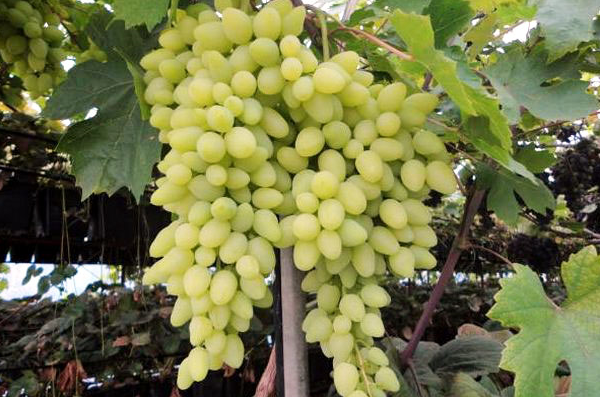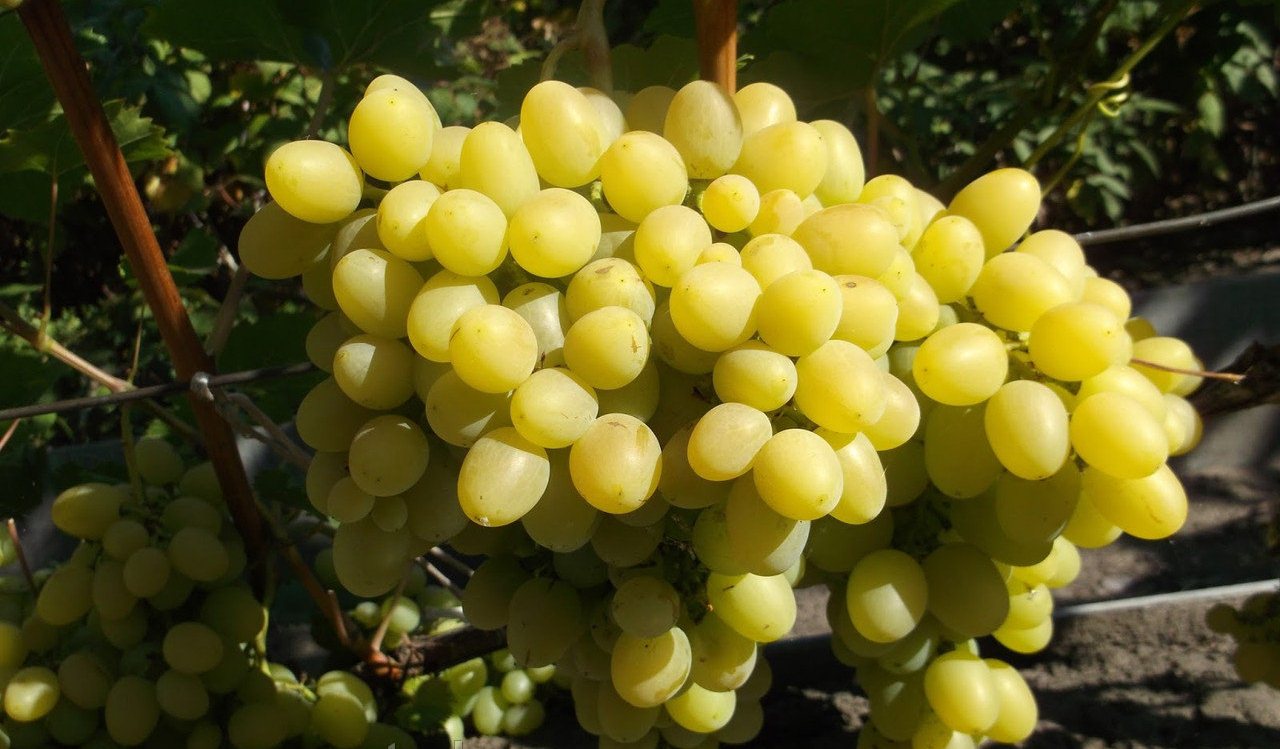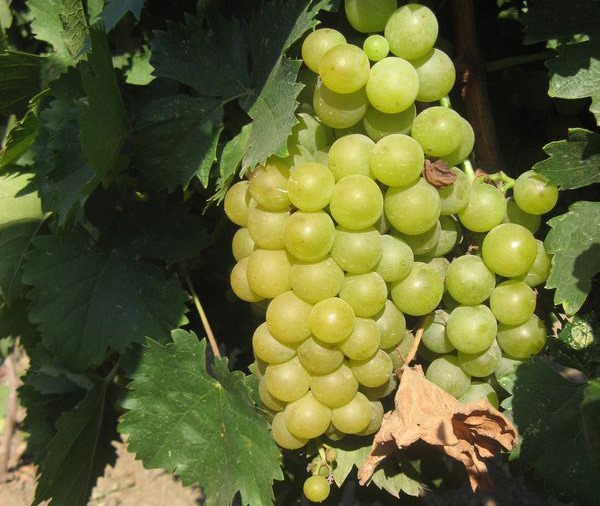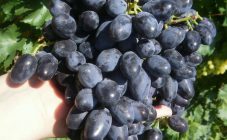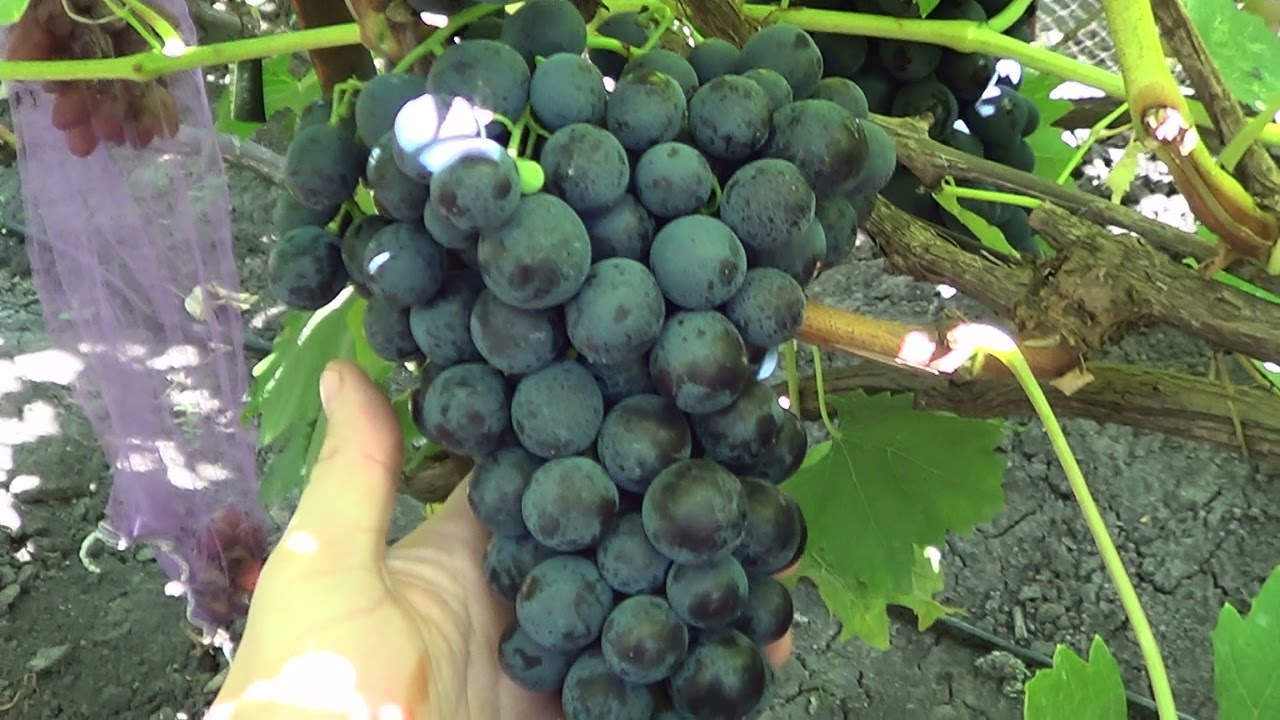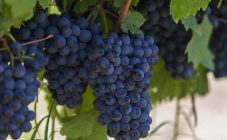Today the number of grape varieties has already exceeded 20 thousand. Breeders are constantly working to create new varieties of crops that have different indicators of yield, resistance to low temperatures and damage to diseases and pests. One of these masterpieces of selection is Agat Donskoy (Agat Dona).
Don Agate grapes: description and characteristics
This grape variety was developed at the end of the 20th century in the Moscow region. The breeders of the N.I. Potapenko Ya. I. The variety was selected based on the use of such crop varieties as Severnaya Zorya and Russian Early. This variety is especially actively grown in Belarus and the Rostov region.
Don Agate grape belongs to early maturing hybrids. It is capable of producing fairly high yields with minimal cost and maintenance. Its berries do not contain much sugar, which allows even people with diabetes to eat it.
The popularity of Agate Don grapes is also due to its high immunity to fungal diseases (mildew or mildew).
Plants form voluminous loose brushes, the weight of each of them ranges from 400 to 600 grams. Each berry weighs 3, 5 - 4, 0 grams. The fruits are intensely blue. Their juicy flesh has a pleasant sourness, which is their highlight. The fruits are covered with a dense skin, which contributes to excellent transportability.
The height of the grape spreading bushes can reach 1.8 m.
The tough leaves are emerald in color.
Berries are used both fresh and for making juice or compotes. Many gardeners prepare delicious Muscat wine from berries.
Features of planting and care
The first few years after planting seedlings in open ground, they do not bear fruit. At this time, the bushes are actively growing, forming young shoots. When the Donskoy grapes begin to bear fruit, the vineyard requires careful and constant care. This increases the likelihood of a rich harvest of juicy and tasty berries.
Each shoot bears 2 to 4 clusters of fruits.
Despite the fact that young shoots grow on the bush rather slowly, they must be pruned annually.
Formative pruning is done after the crop is fully harvested and the leaves have fallen. In this case, no more than 8 buds should be left on each of the stems. Otherwise, with the onset of the new season, less and less crowns will be formed on such stems every year.
When pruning, growers are also advised to prune off excess shoots. Their length after cutting should not be more than 5 - 7 cm. Only the strongest and healthiest stems should be left on the bush. The edges of the slices should be straight. Otherwise, they will heal for a long time.
We must not forget that as the stems grow, they need to be tied up. The best tying method is trellis. The quality and quantity of the harvest fully depends on how correctly the grape tie is performed.
Tying can be done in the following ways:
- Using a vertical trellis. The lower part of the wire is fixed at a height of 60 cm from the ground.For fastening the wire, bases are used in the form of wooden or iron pillars with a diameter of no more than 25 mm. Using this garter option ensures that all stems are accessible and easy to care for. But such designs do not allow tying up very large bushes.
- Using a two-sided trellis. Two trellises are attached to each bush. The distance between them should be at least 70 cm. Using this method provides access to the root system of grapes, its good ventilation and lighting.
When tying, the stems must not be formed in an upright position. This should be done in the form of a fan.
There are several simple ways to propagate grapes:
- The vine is sprinkled with earth. In this case, you can equally successfully use both the already stiffened vine and the still green one. In the second case, landing is carried out in the middle of summer. If woody vines are used, they can be planted in the ground in early spring. When falling asleep on the surface of the soil, it is necessary to leave the top of the vine. Thus, the gardener has the opportunity to simultaneously obtain several young shoots from one seedling. With the onset of autumn, young seedlings are separated from each other and planted separately.
- Fastening containers with soil at the base of the shoots located on the ground surface. This method is considered the most original. For its implementation in the middle of summer, packages with fertile soil are attached at the base of the stem. Several holes are made in each bag. Thanks to this, the grapes are able to form a new root system.
- Cuttings. It is necessary to harvest cuttings in early autumn. A cool basement or cellar is ideal for storing cuttings. They are stored in boxes of wet sand. Cuttings are germinated with the onset of spring. To do this, they are placed in water with a nutrient substrate. After the root system appears, the cuttings can be planted in the soil.
The first watering of the grapes is recommended even before the seedlings are placed in the hole. From 1 to 2 buckets of settled water is poured into it. After burying and compacting the earth, the seedlings are watered again with 1 bucket of water.
In the summer, the grapes are watered as the soil dries. To do this, up to 5 buckets of water are poured under the root.
To give the grapes additional strength necessary for the formation and ripening of berries, fertilizers such as Viva or Kemira are added to the irrigation water. You can also add cow dung to the water.
Watering is especially important at the stage of grape bud formation, as well as during flowering and fruit growth. It is recommended to reduce the number of waterings before and during flowering. Otherwise, there is a risk that most of the flowers will simply crumble. Reducing the amount of watering is also recommended before harvesting. Otherwise, there is a risk that the berries will crack.
With the onset of spring, it is recommended to start preparing the vineyard. At this stage, you need to carry out the following work:
- inspect all branches. Those places where there are lesions or injuries, frostbite must be removed;
- since in the spring it is possible that spring frosts may return, it is not recommended to remove the shelter from the root system;
- each shoot must be cut into several buds. Two-year seedlings must be cut into 4 - 5 buds;
- the ground around the main trunk must be watered with a solution of copper sulfate (3%), Bordeaux mixture or Radomil. After such watering, the soil must be mulched.
How timely and correct the preparation of the vineyard for the winter is, largely depends on what kind of harvest you can get in the summer.
The preparatory activities are as follows:
- carry out water charging irrigation;
- top dressing using potash or phosphorus fertilizers;
- after the grapes have shed their leaves, it is necessary to prune the vine, which is green;
- process the ground part of the bushes with copper sulfate (3%);
- untie the vine from the trellises and tie them freely into small bunches;
- prepare trenches in the ground where the vine will fit for the winter.
One of the advantages of this variety is its high immunity to fungal and infectious diseases. Due to this, the treatment of the vine with fungicides can be carried out no more than 2 times during the season.
Speaking of pests, wasps are the most dangerous for grapes. To avoid wasps attacking the vineyard, it is recommended to avoid planting melliferous plants near it. A good result can also be achieved by using poisonous wasp traps.
Donskoy Agat grapes can be grown almost throughout the country. It has a lot of advantages, does not require complicated self-care, its berries have a pleasant nutmeg taste and do not contain a lot of sugar.
